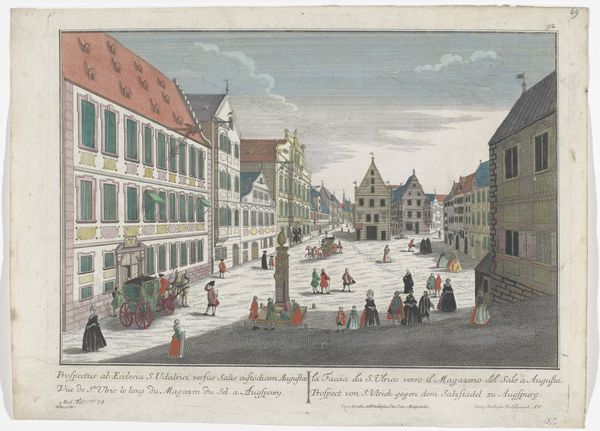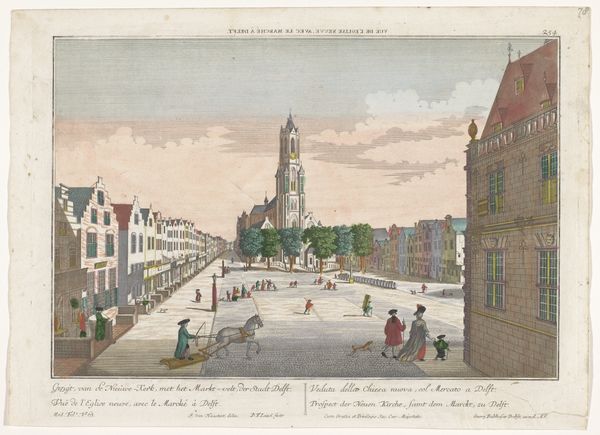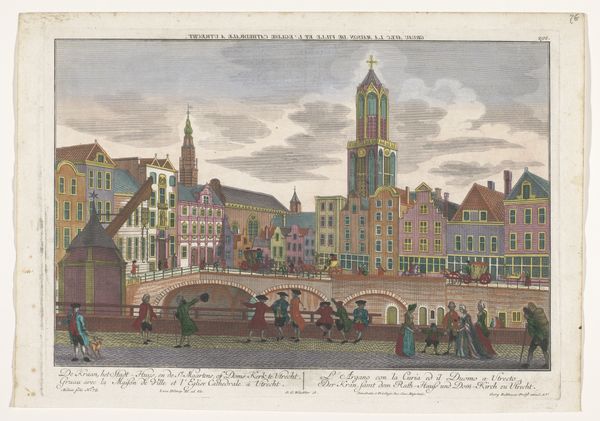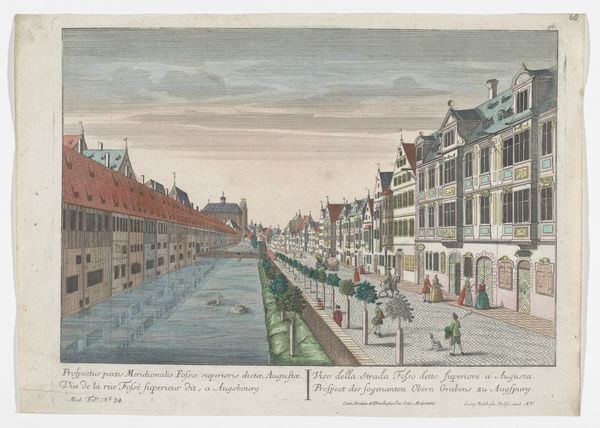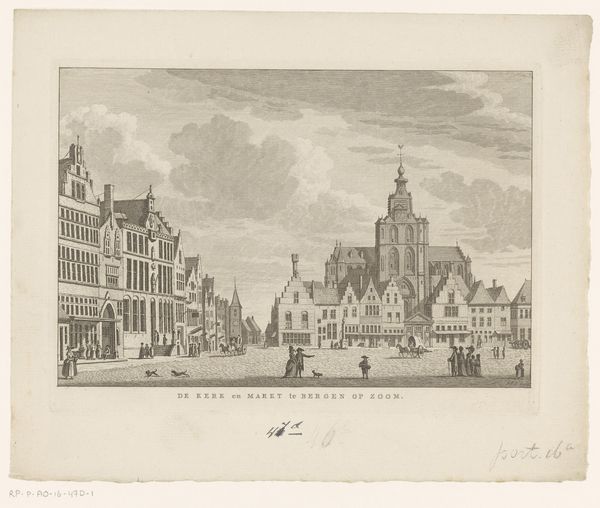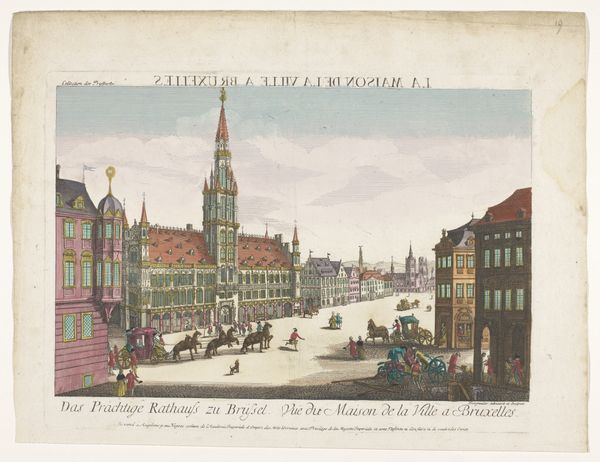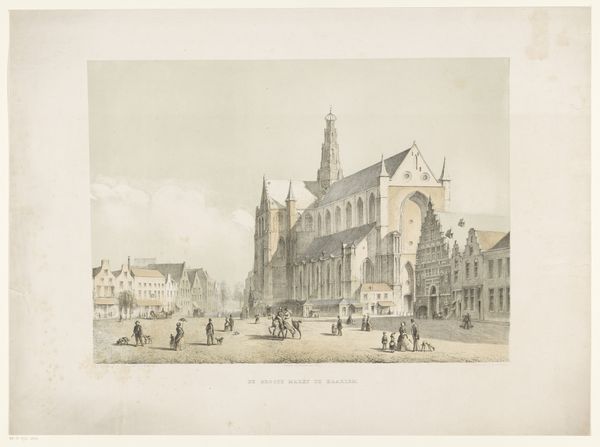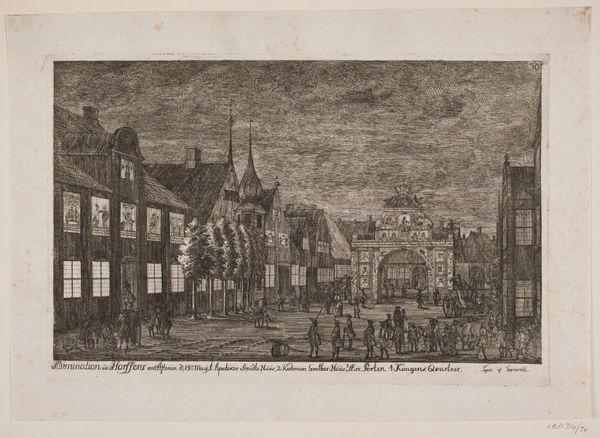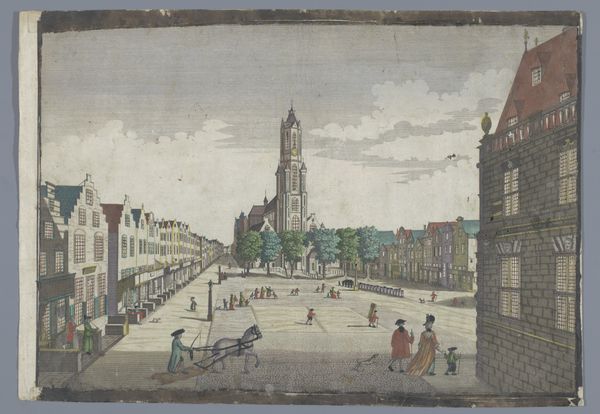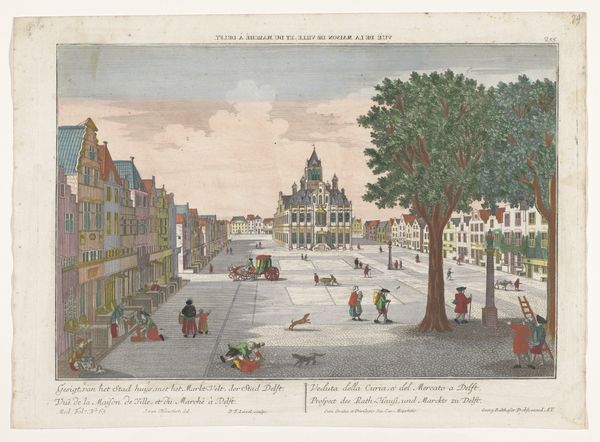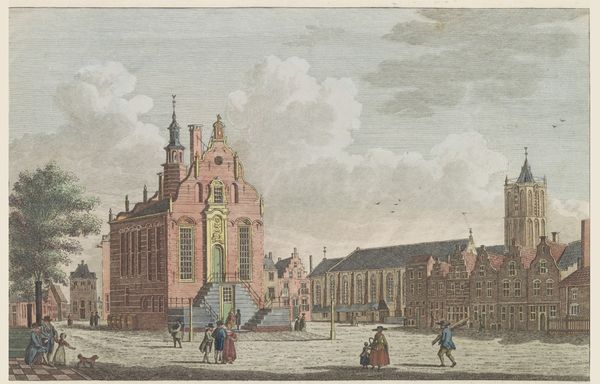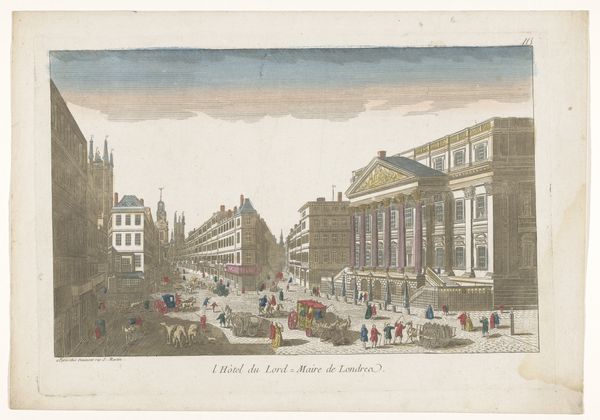
Gezicht op het Stadhuis aan de Grote Markt te Schiedam 1742 - 1801
0:00
0:00
Dimensions: height 323 mm, width 444 mm
Copyright: Rijks Museum: Open Domain
Curator: Oh, I find this piece incredibly charming! The artwork is titled "View of the Town Hall on the Grote Markt in Schiedam" and it was created sometime between 1742 and 1801. Editor: It’s deceptively simple. The subdued palette of watercolor and etching hints at its time, but look closer. It’s an organized view of civic life as observed through printmaking, not pure fine art. The visual order emphasizes material and labor: etching requires particular craftsmanship and training, which lends importance to understanding how art is effectively "made." Curator: Yes! The piece seems to breathe with the very pace of life, the quiet hum of the Dutch Golden Age filtered through a Baroque sensibility. I adore the way the buildings sort of melt into the sky, giving a soft focus that highlights daily rhythms. The figures, small and full of purpose, speak to a busy yet contained existence. Doesn’t the market square call to mind whispered secrets and lively deals? Editor: Precisely. See how the market isn't just presented as backdrop, but a physical manifestation of economic relations. Every detail represents the cost of goods, the work done, the material choices within structures: bricks laid, clothing manufactured. Printmaking ensured accessibility beyond the elite: a democratization of information and image. So its success lies not in some creative gesture by a “lonely” genius, but collaboration across numerous fields from papermaking to distribution. Curator: Perhaps… or maybe there’s something to be said about that Baroque structure of the Town Hall. That striking presence of power contrasts with these soft washes! And that contrast allows us to dream… isn’t that what we look for? An awakening of imagination where power and humanity meet? Editor: But this imagined past reflects present-day economies that define our experience, our use and access to art through institutions and consumption, don't you think? So we cannot deny the artwork's production is part of its charm... to examine the materials tells you more about societal desires than just visual charm, itself influenced by materials at the moment! Curator: Perhaps. The "View" offers a way of seeing as a complex weave. Editor: Precisely. By grasping how its very "fabric" came into being we see societal trends within artistry.
Comments
No comments
Be the first to comment and join the conversation on the ultimate creative platform.

